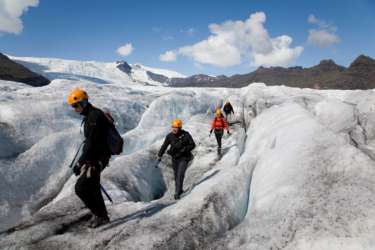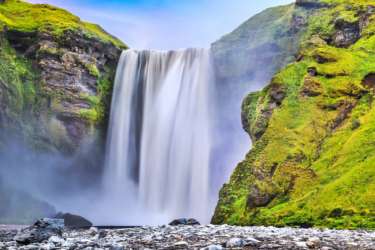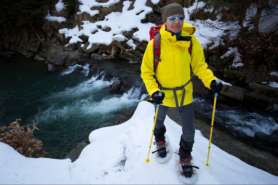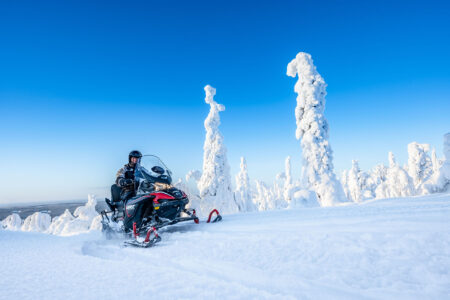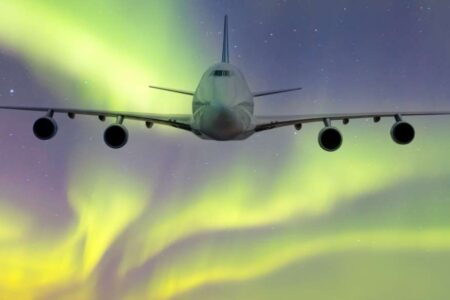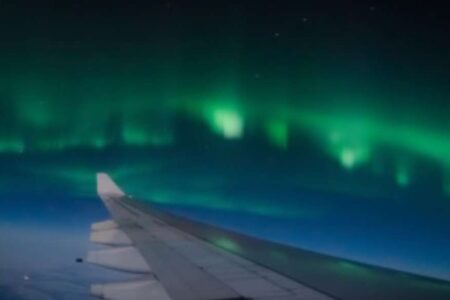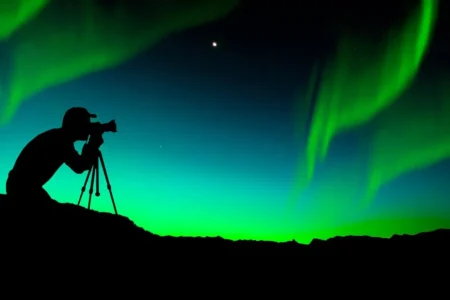Snowmobiling across icy tundra. Exploring thundering waterfalls. Chasing the aurora borealis on exciting wilderness excursions.
Whatever you have planned for your northern lights tour, you want to be confident that your clothing and kit will stand up to Arctic weather conditions.
Temperatures can be as warm as 15˚C in early autumn but as cold as -50˚C in deep midwinter. So you need specialist clothing to stay warm, dry and comfortable, whatever the weather.
With that in mind, here’s our lowdown of the essentials (and some useful little extras) you should pack when travelling to the Arctic Circle.
What to wear in the Arctic in winter
When choosing clothes for the Arctic Circle, it’s all about layers.
Layers help you regulate your temperature by trapping warm air and wicking away moisture. They also allow you to adapt quickly — adding or removing layers — depending on the weather and the activities you’ve got planned for that day.
From autumn through to early April, temperatures throughout the Arctic are cold. So, no matter which month you go to see the aurora, it pays to layer up with the following.
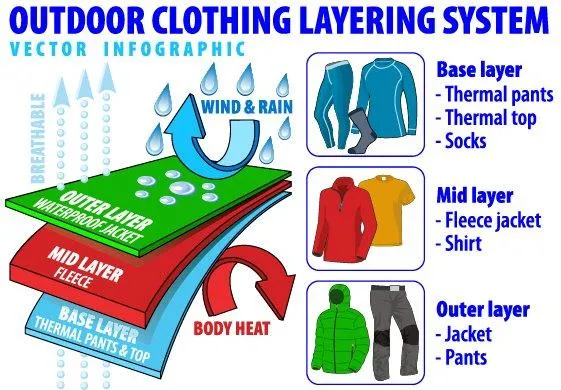
A base layer
Start with a thermal base layer. Avoid cotton as it retains moisture and loses its insulating properties when wet. Instead, opt for layers made from merino wool, bamboo or silk — or technical, synthetic materials.
Great base layers can be picked up easily from outdoor retailers and some high street shops. Look for long-sleeved tops and leggings that are snug but not too tight.
Middle layers
Mid-layers provide further insulation. Pick lightweight tops, breathable fleeces and woollen jumpers. Depending on how thick and warm your outer layer trousers are, it can be worth packing another layer for your bottom half too.
These layers shouldn’t be too tight and restrictive. It makes movement difficult — and it prevents your layers from trapping warm air in the way they’re designed to.
An outer layer
Your outer layer protects you from whatever wind, rain and snow the day decides to throw at you.
So you need a windproof and waterproof winter coat, ideally with a warm and cosy hood. This coat should be big enough to fit two to three layers of clothing underneath. A pair of waterproof trousers is another essential.
Before you buy any new outer layers, check what’s provided on your northern lights holiday. On many tours, you’re given a snow jacket and snow trousers. So you may only need suitable outerwear for your journey to and from the airport.
Outerwear for the hands, feet and head
Your extremities cool down very quickly without the right Arctic clothing. So you’ll also need to pack the following for your northern lights adventure.
- A hat: Choose a hat that covers your ears and is made from fleece, wool or another thermal fabric.
- A neck warmer: A scarf, a snood, a balaclava, a neck gaiter — pack something that will keep your neck and face warm when the temperature drops.
- Warm socks: Go for a two-layer system — a thin liner sock under thick wool or thermal socks.
- Boots: Pick walking boots or snow boots that allow you to wiggle your toes. Tight boots make your feet cool down quicker — and can feel uncomfortable with thick socks.
- Gloves: Use liner gloves underneath insulated waterproof gloves or mittens.
Arctic weather clothes by destination
Temperatures and weather conditions vary depending on your Arctic destination. So here’s our rundown of the Arctic clothes you should pack for each of our northern lights locations.
What to wear in Iceland
On a northern lights trip to Iceland, you won’t experience the extreme cold of Lapland. But winter lasts longer in Iceland than it does in the UK. It also tends to be a little colder.
Temperatures are often around 7˚C in autumn, falling to around -5˚C in winter. By March, the temperature is still only around 2˚C.
So, when travelling to Iceland outside of summer, you should pack for wintery conditions. On a trip to Iceland, you’ll need:
- Walking boots for hiking, caving and ice climbing activities
- Thermal base layers
- Warm woollen or fleece middle layers
- Waterproof jacket and trousers — particularly if you’re planning a trip to any of Iceland’s magnificent waterfalls
- Hat, gloves, a neck warmer and warm socks
- Swimsuit — if you have access to a hot tub and are visiting the Blue Lagoon
- Conditioner — to protect your hair from the silica in the Blue Lagoon
Planning a trip to the summit of a volcano? Or across one of Iceland’s beautiful glaciers? Then take extra layers with you. The wind chill at high elevations can make you feel much colder.
It’s also not unusual to see all four seasons in one day in Iceland. So even if you wake up to sunny skies, it’s always worth taking waterproofs out with you.
Also, bear in mind that if you’re taking part in activities like snowmobiling, northern lights boat tours, husky sledding, or ice climbing, specialist equipment — like helmets, crampons and Arctic outerwear — will be provided.
Clothing for Norway in winter
Like Iceland, Norway doesn’t get as cold as northern Sweden or northern Finland.
This is thanks to the Gulf Stream and the North Atlantic Drift, which bring warm water and air currents to the Norwegian coast.
Fjords and coastal waters remain largely free from ice, and the air temperature is warmer too. But when packing Norway winter clothing, you still need lots of warm layers.
Average winter temperatures in Norway are around -4˚C. But when chasing the northern lights — at night and potentially with some wind chill — you should prepare for temperatures as low as -25˚C.
On a northern lights trip to Norway, you should pack:
- Walking boots
- Thermal base layers
- Warm woollen or fleece middle layers
- Waterproof jacket and trousers
- Hat, gloves, neck warmer and warm socks
If you’re taking part in a particularly chilly activity — like a fjord cruise or a late-night northern lights tour — Arctic outerwear is provided.
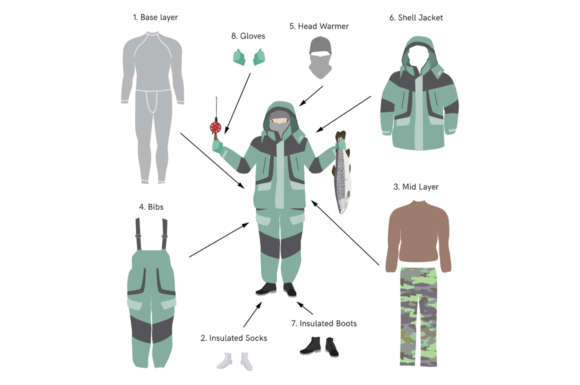
What to wear in Lapland
Lapland (which includes northern Sweden and northern Finland) gets much colder than northern Norway and Iceland.
Temperatures in winter range from -30°C to 0°C. But they have been known to drop as low as -50°C.
On an Aurora Nights holiday to Sweden or Finland, warm Arctic outerwear is provided. This includes:
- An arctic jacket
- Trousers or thermal overalls
- Snow boots
- An outdoor hat
- Arctic gloves
- A helmet for snowmobiling
You’ll still need plenty of thermal base layers and mid layers. You’ll also need walking boots or snow boots and a warm winter coat for arrival and departure.
Packing for a northern lights tour in Finland
In addition to your warm Arctic clothes, pack a swimsuit for the sauna. Rest assured that your log cabin or glass igloo accommodation will be toasty warm. But be prepared to wrap up for dog sledding, snowmobiling and reindeer ride adventures — the wind chill can bring the temperature down even further.
Packing for a northern lights tour in Sweden
Luleå has high humidity, which can make the cold feel more intense than in Kiruna and Abisko. If you’re travelling to Abisko Sky Station, a balaclava and ski goggles can make the chair lift more comfortable. A warm hat is particularly important if you’re spending a night at the Ice Hotel. And you’ll want a swimsuit if you have access to a hot tub or sauna.
One final note: All flights to Swedish Lapland go via Stockholm. We recommend carrying a thermal base layer in your hand luggage, which you can change into at Stockholm Airport. This is good preparation for landing in Lapland — and for the plane itself, which is often noticeably cooler.
A few final Arctic clothing tips
Round off your packing checklist with these little extras.
Don’t forget spares. When the mercury drops, wet gloves and scarves lower your body temperature fast. Scarves and neck warmers often get wet thanks to the condensation created by your breath. So pack spares and carry them with you when you’re out and about.
Leave smart clothes at home. Back at your hotel or out in the city, you’ll find that people dress for comfort and warmth. There’s no need to bring any smart clothes with you on your northern lights tour.
Bring hand warmers. Electronic or air-activated heat packs can bring some much-needed warmth to your extremities. You can put them inside your gloves and — if your boots are big enough — inside your socks to warm up without having to cut a northern lights excursion short.
Pack sunglasses and sun cream. The sun rarely rises in winter. But if you’re travelling to Iceland, Norway or Lapland during autumn or spring, you may be treated to some sunny days. In spring, when the sun bounces off the snow, it can be particularly bright. So bring sunglasses and sun cream to protect your eyes and skin.
Still not sure what to wear on your northern lights holiday?
If you have any questions about what to pack, get in touch with the Arctic experts at Aurora Nights. We’ve been chasing the northern lights across the Nordics for years and are always happy to share our tips.
Whether you’re dressing for dog sledding in Lapland, a glacier walk in Iceland or a fjord cruise in Norway, we’ll help you stay warm and dry — so you’re ready to enjoy the beauty of the aurora whenever it appears.
Want more tips for Arctic travel? Take a look at our other articles:

